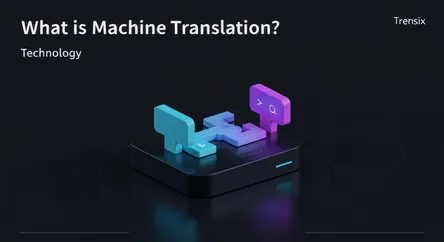Technology
What is Machine Translation?

Explore Machine Translation (MT), the AI-powered technology that automatically translates text and speech, breaking down language barriers worldwide.
What is it?
Machine Translation (MT) is a subfield of artificial intelligence focused on automatically translating text or speech from one language to another. Early systems were rule-based, relying on grammatical rules and dictionaries. However, the modern era is dominated by Neural Machine Translation (NMT), which uses deep learning models to understand the context and nuances of entire sentences. This approach produces significantly more accurate, fluent, and natural-sounding translations compared to its predecessors, mimicking human translation patterns more closely.
Why is it trending?
The surge in MT's popularity is driven by advancements in deep learning and the increasing demand for instant, cross-lingual communication in our globalized world. NMT models, powered by massive datasets and powerful GPUs, have achieved near-human levels of quality for many language pairs. Companies like Google, DeepL, and Microsoft are continuously improving their services, integrating them into browsers, apps, and business workflows, making seamless translation an everyday reality for millions.
How does it affect people?
Machine Translation profoundly impacts daily life by breaking down language barriers. It makes foreign websites, news, and academic papers instantly accessible, fosters international business communication, and aids travelers in navigating new countries. While it empowers global interaction, it also presents challenges. It raises concerns about the future of professional human translators and the potential for misinterpretation in critical contexts like legal or medical documents, where nuanced accuracy is paramount. It serves as a powerful tool but requires human oversight for high-stakes applications.